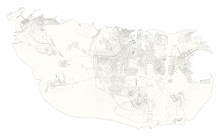1. Henry Coppini
My grandfather, a Maltese retired civil servant and author of “Castille Behind the Scenes”. He was born in 1927, and has lived in Malta for most of his life, including during the Second World War. He is a great source of information on Maltese politics and is also a great story-teller of the Malta he has known.
2. Rebecca Cremona
Maltese émigré and film-maker. Rebecca’s scripts and films are often centred around notions of identity, nostalgia and being Maltese. I intend to use Rebecca as a sounding board for ideas and a source of inspiration.
3. Joran Rapa Manche
Maltese-Londoner and illustrator. I have chosen Joran because he will be able to attend crits, and because he is very opinionated and honest. If the project were to become too personal or unrealistic I am confident that he will point it out.
4. Edward Said
Maltese restoration architect, of the Fondazzjoni Wirt Artna (Malta Heritage Trust) and writer for “The Architect” a Maltese Architectural Publication. Edward knows the workings of Maltese Planning and Architectural practice, he is also a bit of an activist and intends to start a magazine called “Only in Malta”. I think his interests in conservation and his extensive knowledge on Maltese heritage will make for some challenging conversations on the future of Maltese Architecture.
5. Signy Svalstoga
Postgraduate Academic Leader at the ASD, and Diploma Unit 10 tutor. The themes and methodology explored in diploma unit 10 are of interest to me and are relevant to the project, I believe Signy could provide insight into working with varying scales, and exploring notions of memory and tactility.
6. Jon Mitchell
Social Anthropologist whose main research site is Malta. I intend to use him as a sounding board in terms of notions of Maltese identity, to ensure that my observations and assumptions are not too one-sided.
7. Manuel & Anne-Marie Baldacchino of the Limestone Heritage, Malta
I plan to discuss the material; its properties, associated crafts, the processes of extraction and use, its potential for use outside of its traditional function as a block material and the potential of the quarries that are left behiind after its extraction.
8. Maltese Traditional Tile Maker
When in Malta I also plan to meet with a traditional tile-maker to discuss the process of making patterned tiles using different coloured concrete and a metal mould.
9 and 10 Two friends to be identified during the course of the project.
Subscribe to:
Post Comments (Atom)

9 Joe Gerada
ReplyDeleteMy father has been an unofficial project friend since our map conversation in December. I have decided to make it official because his contributions have become key to the project. He drew the South of Malta, including Birzebbuga the village he grew up in - which eventually became my site. He explained the historical, social, economic factors that have shaped and changed this area and the reasons why it is so separate from the rest of Malta. Lately he is one of the people I find most helpful in answering almost any type of question I have on Malta, be it architectural, social, historical, economic or completely random.